Paul Schmeling – Music Theory 201: Harmony and Function
$1,250.00 Original price was: $1,250.00.$250.00Current price is: $250.00.
Digital Download: You will receive a download link via your order email after successful payment.
Continuing on from the concepts presented in Music Theory 101, this music theory course will further develop your background in music theory and provide you with the foundational knowledge you’ll need to be a more effective writer and player.
Music Theory 201: Harmony and Function
Continuing on from the concepts presented in Music Theory 101, this music theory course will further develop your background in music theory and provide you with the foundational knowledge you’ll need to be a more effective writer and player.
You’ll master the fundamental concepts of rhythm and harmony—and learn more complex chords, progressions, and rhythms that will open up your understanding of the elements that together contribute to put the groove in jazz, pop, blues, and rock. You’ll study topics including rhythmic anticipations and related notation issues; articulation markings; diatonic triads and seventh chords in both major and harmonic minor; harmonic function; the II V I chord progression; some additional chord types; melodic and harmonic tension; and the blues form and style. You’ll understand why chords move from one to another the way they do; and learn to better analyze and write harmonic progressions and different rhythmic styles. Through ear training exercises, musical examples, and personalized feedback from your instructor, you’ll be able to analyze, read, write, and listen more effectively as well as understand the fundamental knowledge essential to the beginning studies of harmony.
By the end of this course, you will:
- Understand rhythmic anticipation and articulations
- Understand diatonic triads and seventh chords in major and harmonic minor
- Understand the II V I chord progression
- Understand the melodic and harmonic use of tensions
- Understand the blues form and style
Syllabus
Lesson 1 The Imaginary Bar Line
Lesson 2 Diatonic Triads and Seventh Chords in Major
Lesson 3 The Harmonic Function of Diatonic Chords
Lesson 4 Additional Chord Types
Lesson 5 Harmonic Function and Voice Leading of Additional Chord Types
Lesson 6 Diatonic Chords in Harmonic Minor
Lesson 7 The Upper Structures of Harmony/Tensions
Lesson 8 The Harmonic Use of Tensions
Lesson 9 The Rhythmic Anticipation and Articulations
Lesson 10 Simple Binary Song Form
Lesson 11 The Blues Form and Style
Lesson 12 A Closer Look at the Dominant Seventh Chord
Requirements
Prerequisites and Course-Specific Requirements
- Completion of Music Foundations or Music Theory 101 or equivalent knowledge and experience is required.
- Take the Music Theory self-assessment quiz to determine your level.
Required Textbook(s)
- None required
Software Requirements
- MuseScore, Finale (full version), or Finale NotePad (PC)
Instructors
Instructor
Russell Hoffmann is Assistant Professor of Piano at Berklee College of Music and is a pianist, recording artist, composer and arranger in many styles of contemporary music, including jazz, Latin, and pop styles. He has served as musical director for Concord recording artist Marlena Shaw and the University of Minnesota’s “Twelve Moods for Jazz” Langston Hughes project. He has performed with many jazz luminaries, including Jack McDuff, James Moody, Billy Hart, Donald Harrison, Bobbie McFerrin, Peter Lietch, and many of Boston’s finest jazz artists. As a clinician, Russ has appeared in Berklee’s Italy summer program, Umbria Jazz Festival, Perugia, Italy; Berklee in Taipei; Kuala Lumpur, Malaysia; Heineken Jazz Fest, San Juan, Puerto Rico; and the Berklee Annual Jazz Festival. He is the author of workbooks on keyboard comping, ensemble performance, and co-author of the Berklee Practice Method: Keyboard.
Instructor
An assistant professor in Berklee’s Harmony department since 1997, Alizon Lissance is a well-rounded musician with decades of experience as a multi-keyboard player, vocalist, songwriter, and arranger. She has earned regional and national accolades, ranging from critical acclaim in Musician Magazine to receiving a Boston Music Award as “Outstanding Keyboardist” in 1991.
In 2005 Lissance released the CD So What About You, an eclectic collection of original material. She is a founding member of The Love Dogs, an established jump/swing rhythm & blues band that has released four CDs and has been touring in North America and Europe since 1994. She also keeps busy with freelance recording and performing engagements.
As an alumnus and faculty member of the Berklee College of Music, Lissance is thrilled to be a part of the extension school providing the “Berklee Experience” to people who might not otherwise have that opportunity.
Instructor
Bruno Raberg is an internationally renowned bass player and composer. Since coming to the US from his native Sweden in 1981, he has made six recordings as a leader, about 30 as a sideman, and has performed with numerous world-class artists. Some of the distinguished musicians Råberg has performed/recorded with include Jerry Bergonzi, George Garzone, Sam Rivers, Billy Pierce, Donny McCaslin, Billy Hart, Bob Moses, Mick Goodrick, Ben Monder, Bruce Barth, Jim Black, Matt Wilson, Ted Poor, Bob Mintzer, and John Medeski. Tours have taken Råberg throughout Europe, Scandinavia, USA, Japan, India, Africa, and Central America, and to jazz festivals such as Pori, Umbria, Monterey, Nancy, Bologna, Graz, Stockholm, Boston, and Cape Town. Råberg is currently leading several constellations of his own: the Lifelines Quartet with Chris Cheek, Ben Monder, and Ted Poor.
Instructor
Michael Moyes has been working at Berklee since 2008. He has performed piano as a soloist, in combos, and accompanied by a full orchestra. In addition to piano and music theory, Michael teaches five string banjo and actively performs and records original bluegrass, country, and folk music. He is also the Associate Dean of Admissions Strategy and Operations for Berklee College of Music.
What’s Next?
When taken for credit, Music Theory 201: Harmony and Function can be applied towards these associated programs:
Associated Certificate Programs
- General Music Studies Professional Certificate
- General Music Studies Advanced Professional Certificate
- Music Theory Professional Certificate
- Theory, Harmony & Ear Training Advanced Professional Certificate
Associated Degree Majors
- Bachelor’s Degree in Music Production
- Bachelor’s Degree in Music Business
- Bachelor’s Degree in Electronic Music Production and Sound Design
- Bachelor’s Degree in Interdisciplinary Music Studies (Create Your Own Major)
- Bachelor’s Degree in Songwriting
- Bachelor’s Degree in Guitar
- Bachelor’s Degree in Songwriting and Producing Music
Get Download Paul Schmeling – Music Theory 201: Harmony and Function at IMC.sale today!
Delivery Method
– After your purchase, you’ll see a View your orders link which goes to the Downloads page. Here, you can download all the files associated with your order.
– Downloads are available once your payment is confirmed, we’ll also send you a download notification email separate from any transaction notification emails you receive from IMC.sale.
– Since it is a digital copy, our suggestion is to download and save it to your hard drive. In case the link is broken for any reason, please contact us and we will resend the new download link.
– If you cannot find the download link, please don’t worry about that. We will update and notify you as soon as possible at 8:00 AM – 8:00 PM (UTC+8).
Thank You For Shopping With Us!



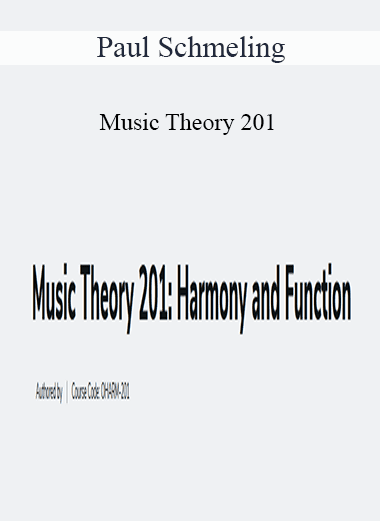
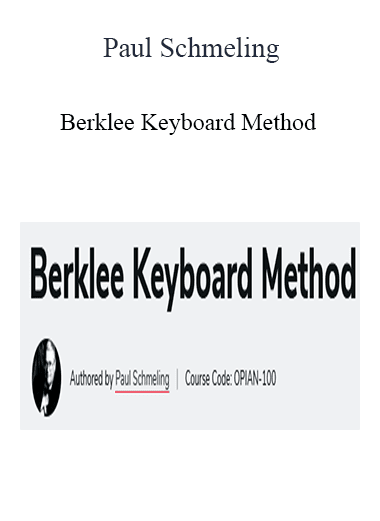
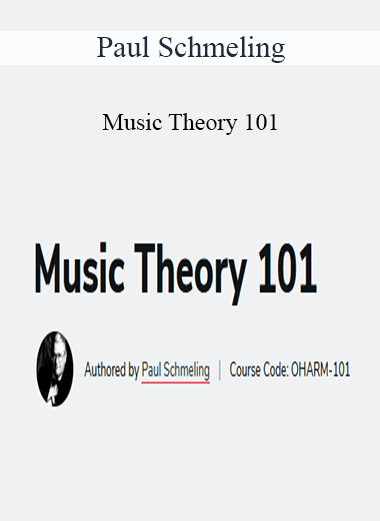
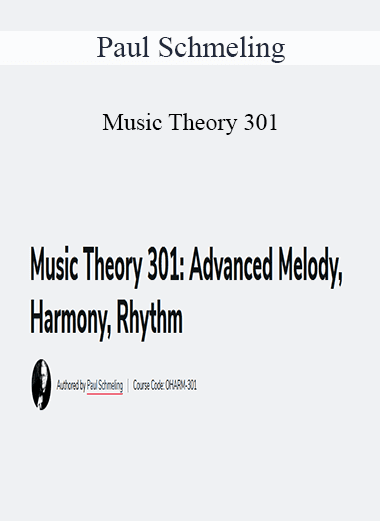
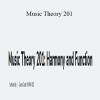
8 reviews for Paul Schmeling – Music Theory 201: Harmony and Function
There are no reviews yet.